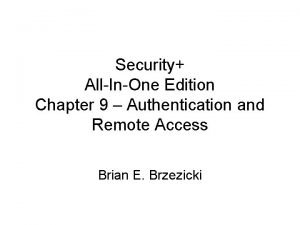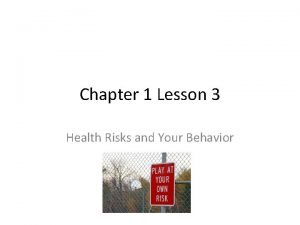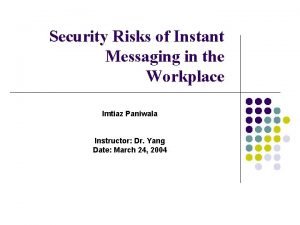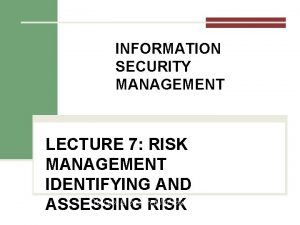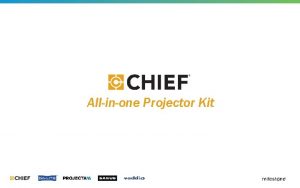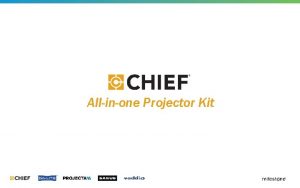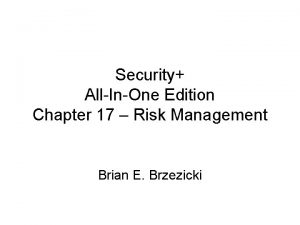Information Security Risks AllinOne Terminology Information Security Risk












- Slides: 12

Information Security Risks; All-in-One Terminology

Information Security Risk Management Lifecycle with some Basic Elements (controls)

Qualitative Risk Analysis (Nitel Risk Analizi) > Generally used in Information Security • Hard to make meaningful valuations and meaningful probabilities • Relative ordering is faster and more important > Many approaches to performing qualitative risk analysis > Same basic steps as quantitative analysis • Still identifying asserts, threats, vulnerabilities, and controls • Just evaluating importance differently

Qual. Risk Analysis in 10 steps > Step 1: Identify Scope • Bound the problem > Step 2: Assemble team • Include subject matter experts, management in charge of implementing, users > Step 3: Identify Threats • Pick from lists of known threats • Brainstorm new threats • Mixing threats and vulnerabilities here. . .

Step 4: Threat prioritization > Prioritize threats for each assert • Likelihood of occurrence (note that this is likelihood because it is not a statistical probability value) > Define a fixed threat rating • E. g. , Low(1) … High(5) > Associate a rating with each threat > Note: Approximation to the risk probability in quantitative approach

Step 5: Loss Impact > With each threat determine loss impact > Define a fixed ranking • E. g. , Low(1) … High(5) > Used to prioritize damage to asset from threat

Step 6: Total impact > Example 2: Another alternative method, where the scaled qualitative values are multiplied) Threat Fire Threat Priority 3 Impact Priority 5 Risk Factor 15 Water 2 5 10 Theft 2 3 6

Step 7: Identify Controls/Safeguards > Potentially come into the analysis with an initial set of possible controls > Associate controls with each threat > Starting with high priority risks • Do cost-benefits and coverage analysis (Step 8) • Rank controls (Step 9)

Step 8: Safeguard (Control) Evaluation Step 9: Rank these Controls !

Step 10: Communicate Results > Most risk analysis projects result in a written report • Generally not read • Make a good executive summary • Beneficial to track decisions. > Real communication done in meetings an presentations

Another Qualitative Inf. Sec. Risk Assessment Example (by multiplying the scaled values)

 Sap allinone
Sap allinone Allinone remote
Allinone remote Credit risk market risk operational risk
Credit risk market risk operational risk The biggest risk is not taking any risks
The biggest risk is not taking any risks Related risks that increase in effect with each added risk
Related risks that increase in effect with each added risk Risks of instant messaging in the workplace
Risks of instant messaging in the workplace Challenges in media information
Challenges in media information Privat security
Privat security Risk terminology
Risk terminology Visa international security model
Visa international security model What is nstissc security model
What is nstissc security model What is risk projection in software engineering
What is risk projection in software engineering Risk reduction vs risk avoidance
Risk reduction vs risk avoidance

